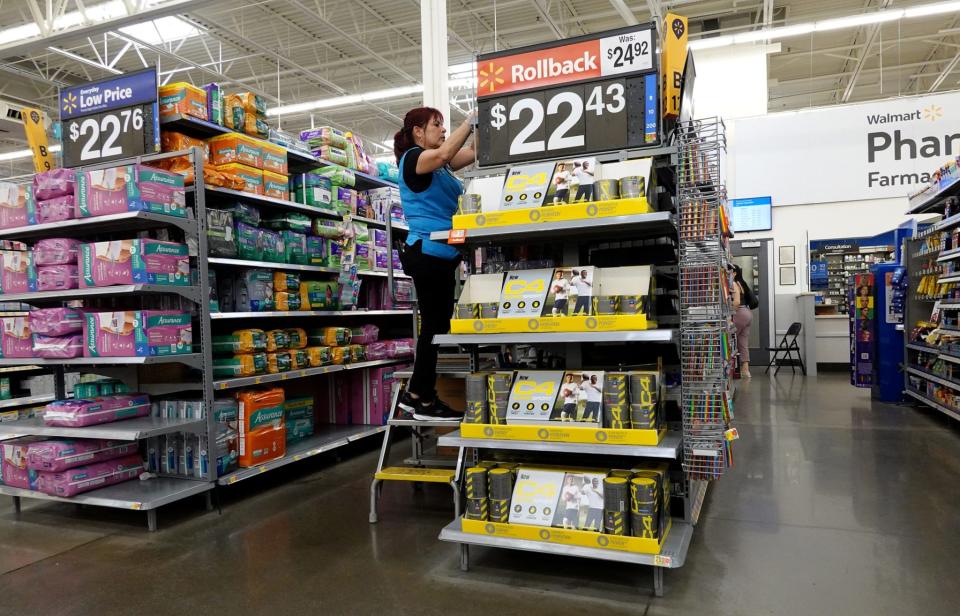Walmart is replacing its price labels with digital screens—but the company swears it won’t use it for surge pricing

Sticker shock has taken on a whole new meaning at retailers and grocery stores. That’s because sticker price tags are going out of style, only to be replaced by “digital shelf labels,” or DSLs. Merchants have been trying for a while to figure out how to cope with changes in consumer behavior owing to inflation. Some are adding service fees or sneaky price labeling—but others are using DSLs to their advantage.
Indeed, Walmart, the world’s largest retailer, announced earlier this month it would be doing away with sticker shelf pricing at its 2,300 stores by 2026, a change “ultimately making us faster and improving the customer experience.”
To put this in perspective, Walmart stores have more than 120,000 products on shelves, each of which have their own price tag. Employees have to change prices regularly for new items, markdowns, and “Rollbacks,” or Walmart’s version of a sale item. This process can be especially time-consuming for the company’s retail employees.
“A price change that used to take an associate two days to update now takes only minutes with the new DSL system,” Daniela Boscan, a food and consumable team lead at a Walmart store in Hurst, Texas, wrote in a blog post. “This efficiency means we can spend more time assisting customers and less time on repetitive tasks.”
Walmart swears it’s not introducing surge pricing
While this new technology could be beneficial for Walmart workers, the speed and ease of updating prices has raised some eyebrows, considering how the company is introducing DSLs right as surge pricing has become a popular way to combat inflation. If it’s that easy to update a price, then why wouldn’t Walmart implement surge pricing into its business model?
Other companies—particularly restaurants—have recently taken the heat for implementing surge pricing. Wendy’s faced backlash earlier this year for plans to introduce digital menu boards and dynamic pricing at its restaurants, which Sen. Elizabeth Warren said was “price gouging plain and simple, and American families have had enough.” The company quickly clarified its stance on pricing.
“We said these menu boards would give us more flexibility to change the display of featured items,” the company said in a statement. “This was misconstrued in some media reports as an intent to raise prices when demand is highest at our restaurants. We have no plans to do that and would not raise prices when our customers are visiting us most.”
Walmart similarly insists that introducing surge pricing would go against one of the company’s pillars: offering an “everyday low price.”
“The DSL program is not designed for dynamic pricing,” Walmart spokesperson Cristina Rodrigues told Retail Brew. “Walmart adheres to everyday low price[s].” She doubled down on the statement that DSLs just make it easier for associates to add pricing for new products and update pricing on sale items. The technology also makes it easier to manage Rollback products, which are put on temporary sale for weeks or months at a time.
The ability to change prices at just the touch of a few buttons also raises the question of how often the retailer plans to change its prices.
“It is absolutely not going to be ‘One hour it is this price and the next hour it is not,’” Greg Cathey, senior vice president of transformation and innovation at Walmart, told Reuters during the company’s annual shareholder meeting in Bentonville, Ark., last week.
This story was originally featured on Fortune.com

 Yahoo Finance
Yahoo Finance 